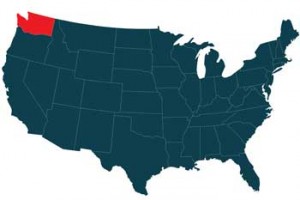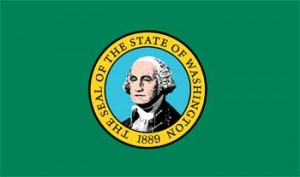Washington Emergency Vehicle Light State Statutes
 Washington laws allow certain vehicles to use emergency lights and siren. The same law explicitly states the specifications of the emergency vehicle lights that should be used. Emergency vehicle drivers in Washington should, therefore, familiarize themselves with the applicable laws before mounting emergency lights on their vehicles. This guide will discuss emergency lights specifications for all types of emergency vehicles in Washington.
Washington laws allow certain vehicles to use emergency lights and siren. The same law explicitly states the specifications of the emergency vehicle lights that should be used. Emergency vehicle drivers in Washington should, therefore, familiarize themselves with the applicable laws before mounting emergency lights on their vehicles. This guide will discuss emergency lights specifications for all types of emergency vehicles in Washington.
Washington authorized emergency Vehicles
The authorized emergency vehicles in Washington are defined in Revised Code of Washington (RCW) 46.04.040:
"Authorized emergency vehicle" means any vehicle of any fire department, police department, sheriff's office, coroner, prosecuting attorney, Washington state patrol, ambulance service, public or private, which need not be classified, registered or authorized by the state patrol, or any other vehicle authorized in writing by the state patrol.”
This means that besides the regular emergency vehicles such as state patrol vehicles and ambulances, any other vehicle can be regarded as an authorized emergency vehicle if authorized by the state patrol. Below are the general rules regarding the use of emergency lights in Washington.
General rules regarding the use of emergency lights in Washington
All emergency lights in Washington must conform to the standards under RCW 46.37.320. The requirements include
- They must comply with the Federal Motor Vehicle Safety Standards
- They must comply with the specifications set by the Society of Automotive Engineers
- They must be certified as compliant with the standards set by regulatory bodies such as the American Association of Motor Vehicle Administrators and the American National Standards Institute
Use of head light flashing systems
Under WAC 204-21-130, head light flashing systems can be used by any authorized emergency vehicle. The flashing systems must conform to the following standards.
- They must be designed in such a way that the head light system operates normally even when the lights fail to flash.
- Their circuits should have a conspicuous indicator light that shows when the system is off and on.
- Their circuit should only flash the high beams from the head light. The flashing rate of each side should be between 60 and 120 flashes per minute.
- They must have a mechanism for stopping flashing and providing sufficient illumination when the light is set to high-beam mode. The illumination should come from both head lights.
Emergency light colors for specific vehicles.
Under RCW 46.37.190, all authorized emergency vehicles are required to have at least one red light. The red light produced by the lights should be visible from more than 500 feet in normal sunlight conditions. Furthermore, under WAC 204-21-130, authorized emergency vehicles are allowed to have flashing white or amber lights. The following are the color specifications for specific cars.
Law enforcement/ police vehicles (WAC 204-21-130)
All law enforcement vehicles are required to have one blue light. In addition to that, these vehicles can, at the operator's discretion, have flashing amber, white, or red lights.
Fire department vehicles ( RCW 46.37.184 )
Red lights should identify all fire departments vehicles. The red lights should have the following characteristics
- They should be of an intermittent flashing type.
- Under normal weather conditions, the lights should be visible from both the rear and front sides for a distance of at least 500 feet.
- The red lights should be fitted far from the headlights so that they will still be conspicuous when the headlights are on.
- At all times when the vehicle has emergency status, the lights should be functional.
Volunteer firefighters private cars (RCW 46.37.185)
Firefighters, with approval from the chief of their respective service, are allowed to install green lights on the front side of their private vehicles. The green lights should meet the following conditions.
- They should only be used when the vehicles are on emergency duty
- Under normal weather conditions, the lights should be conspicuous from distances more than 200 feet.
- They must meet all the requirements of SAE J595. However, the color of the light should green as described in SAE J578
- The light projected in any one direction should not exceed 300 candlepower.
- They should be mounted more than 24 inches above the ground level. The green light can also be placed on the portion above the windscreen.
- The lights can be mounted anywhere between the center and the left end of vehicle
- The green lights should only be used for identification purposes. Furthermore, the operators of volunteer firefighters private cars are not entitled to the privileges for operators of authorized emergency vehicles under RCW 46.61.035
Emergency tow trucks (RCW 46.37.196)
All emergency tow trucks should have red lights with the following qualities
- The lights should be intermittent or revolving
- The red light should be visible from a radius of at least 500 feet under normal weather conditions. This means a 360 degrees visibility.
It is important to note that emergency tow trucks red light should only be used at an emergency or accident scenes. It is unlawful to use the red lights for other purposes, even when traveling to an accident scene.
lights on other vehicles. ( WCW 204-21-130)
The guidelines below are applicable to the following vehicles
- Public utility vehicles such as power trucks
- Construction and maintenance vehicles
- Tow trucks
- Rural newspaper carriers
- Pilot cars
- Animal control vehicles
- Search and rescue team vehicles
- Response team vehicles that transport hazardous materials
- Rural newspaper carriers
- Any vehicle carrying loads that exceed legal dimensions
 Flashing amber lights
Flashing amber lights
The vehicles above may have flashing amber lights. The lights must meet the conditions stipulated in WCW 204-21-130 subsection (5):
- They must produce enough intensity to make them visible to approaching vehicles from a distance of at least 500 feet.
- At all angles within 45 degrees left and 45 degrees right of the front end the vehicle, the whole projected area of the lens of the amber light should be visible from the eye height of other drivers.
- They may be mounted at any height.
- They should only be used when involved in operations during which warning of the other traffic is required. For example, the amber lights should not be on when the vehicles are traveling to the site of operation.
WCW subsection 5 (c) outlines additional guidelines for specific vehicles as follows
- The site of operation for tow trucks is the point where the towed vehicle is attached to or detached from the truck.
- Pilot cars lights should not be on when the vehicles are not providing escort service.
- For rural newspaper delivery vehicles, the amber lights should be off when the vehicle is not in the delivery route
- The lights on vehicles carrying oversize loads may be illuminated on public roadways.
It is important to note that the operators of the vehicles described in this section are not entitled to the privileges for operators of authorized emergency vehicles under RCW 46.61.035
Ambulance lights
Licensed ambulances are allowed to have head light flashing systems. The head light should meet the conditions stipulated in WAC 204-21-130 subsection (2). These are the same requirements for head light flashing systems discussed earlier. Beside the red lights, ambulances may have white, blue, or ambers lights.
For more information about what lights may be available to you, we suggest calling your State Highway Patrol office at: 253-538-3105
*Please note that these numbers are what we are currently able to find and the numbers may have changed since this listing.
Disclaimer: The emergency vehicle light state statute guide was created by Extreme Tactical Dynamics as a guide and reference. We make no claim to the accuracy or validity of this guide. This guide was written to the best of our knowledge and has been provided to our customers as a courtesy ONLY! The information in this guide is our interpretation of the law as we have read it. We cannot be held responsible for any errors as this is only our interpretation of the law and the laws are constantly changing. We cannot be held liable or responsible for any errors and recommend that our customers refer to their local authorities to confirm the particular statue that governs their use of emergency vehicle lights.
 Facebook
Twitter
Google+
Instagram
YouTube
Facebook
Twitter
Google+
Instagram
YouTube


